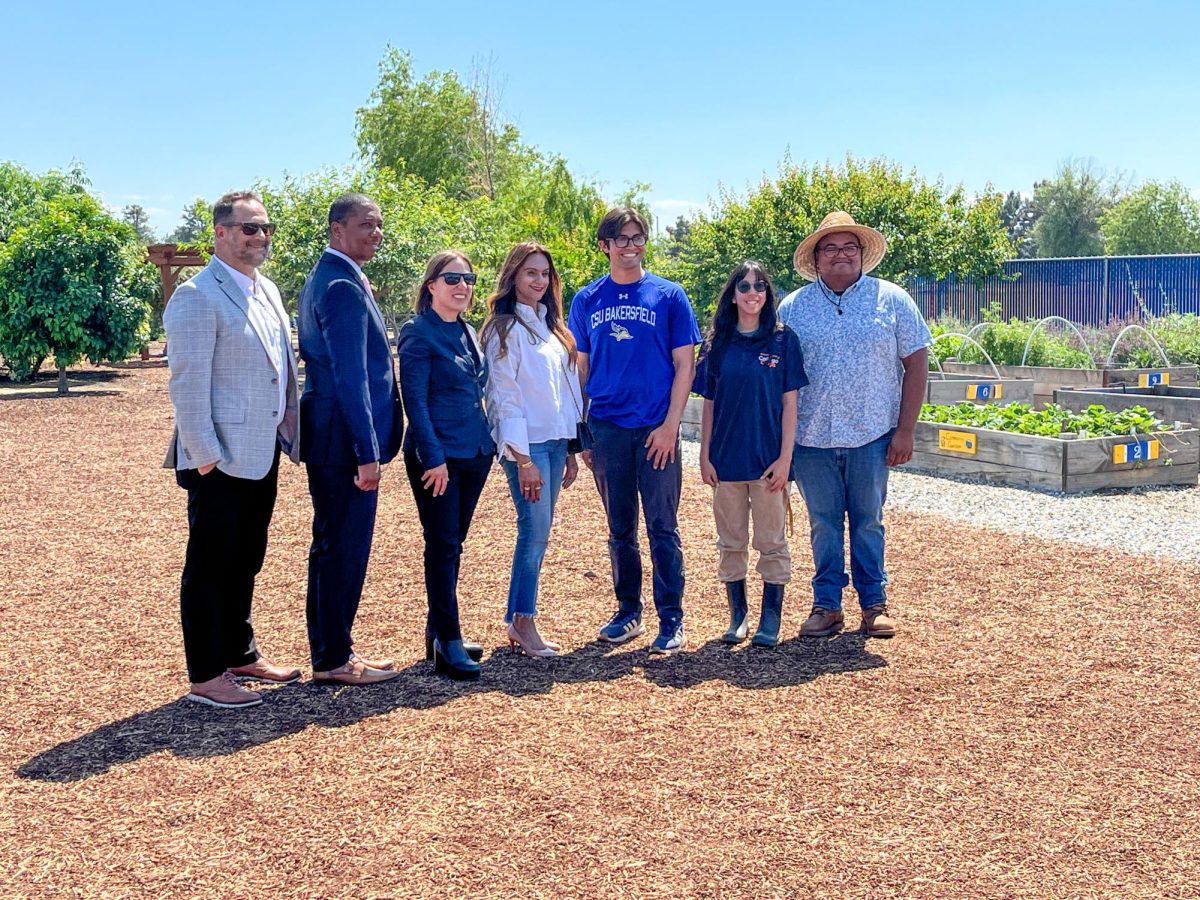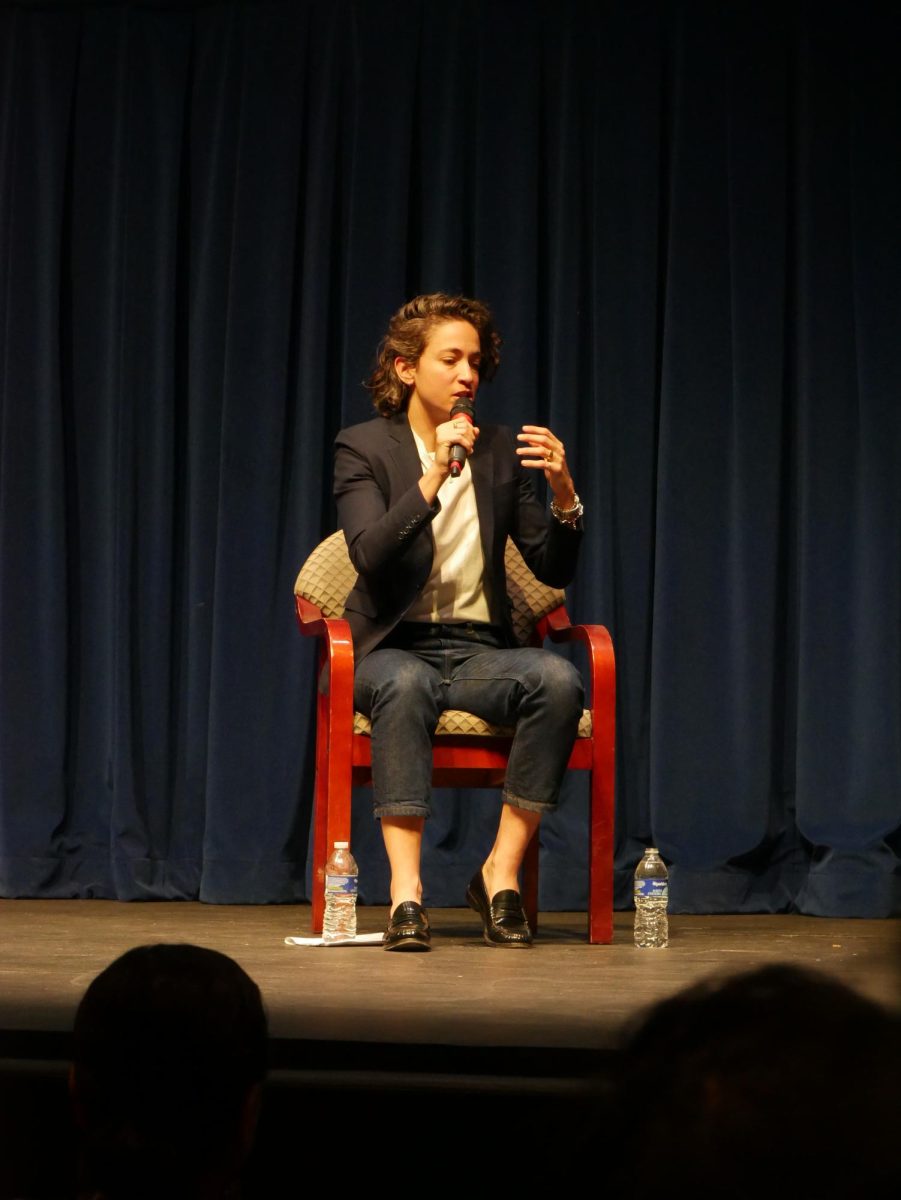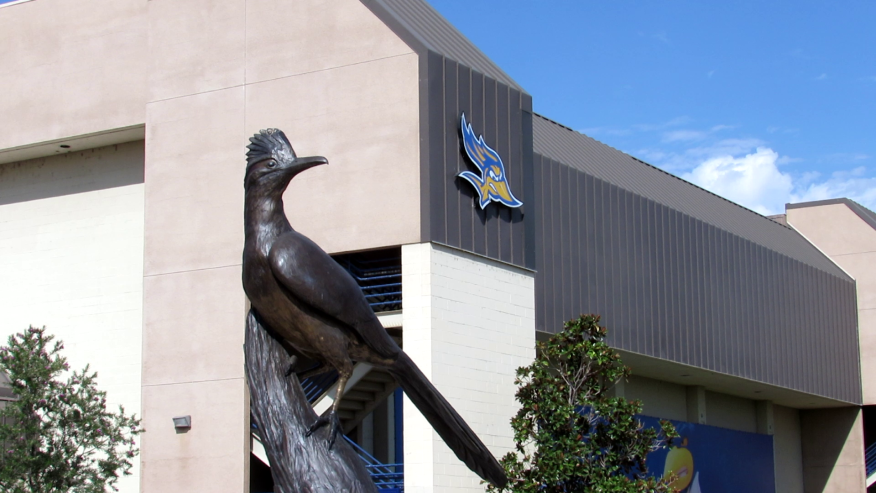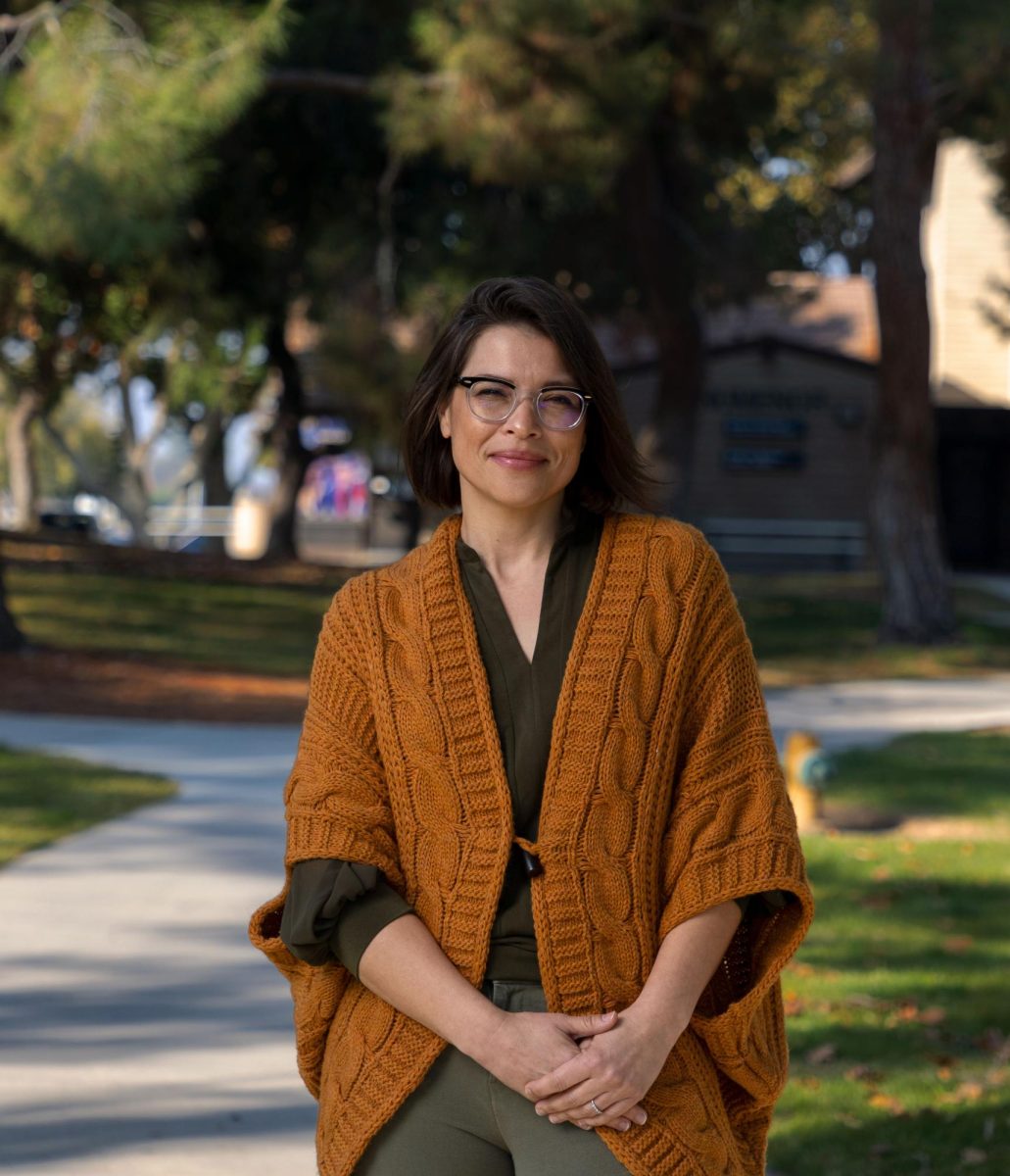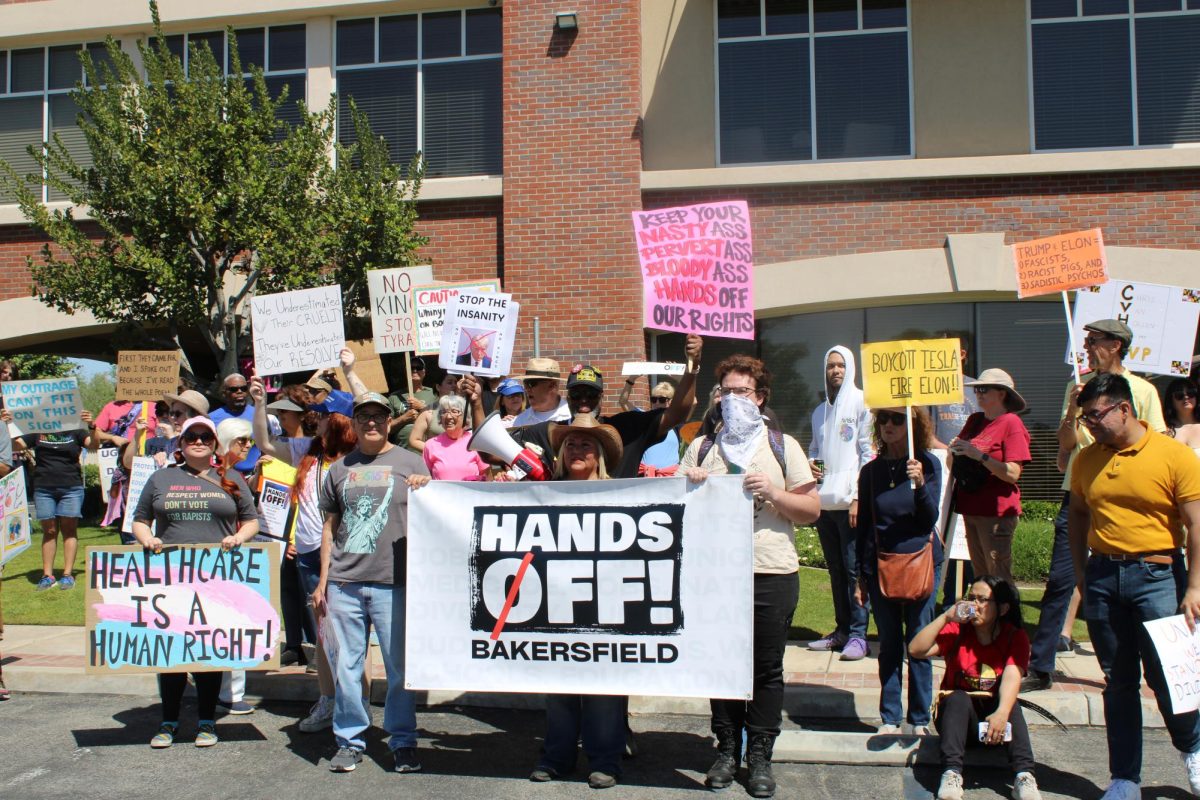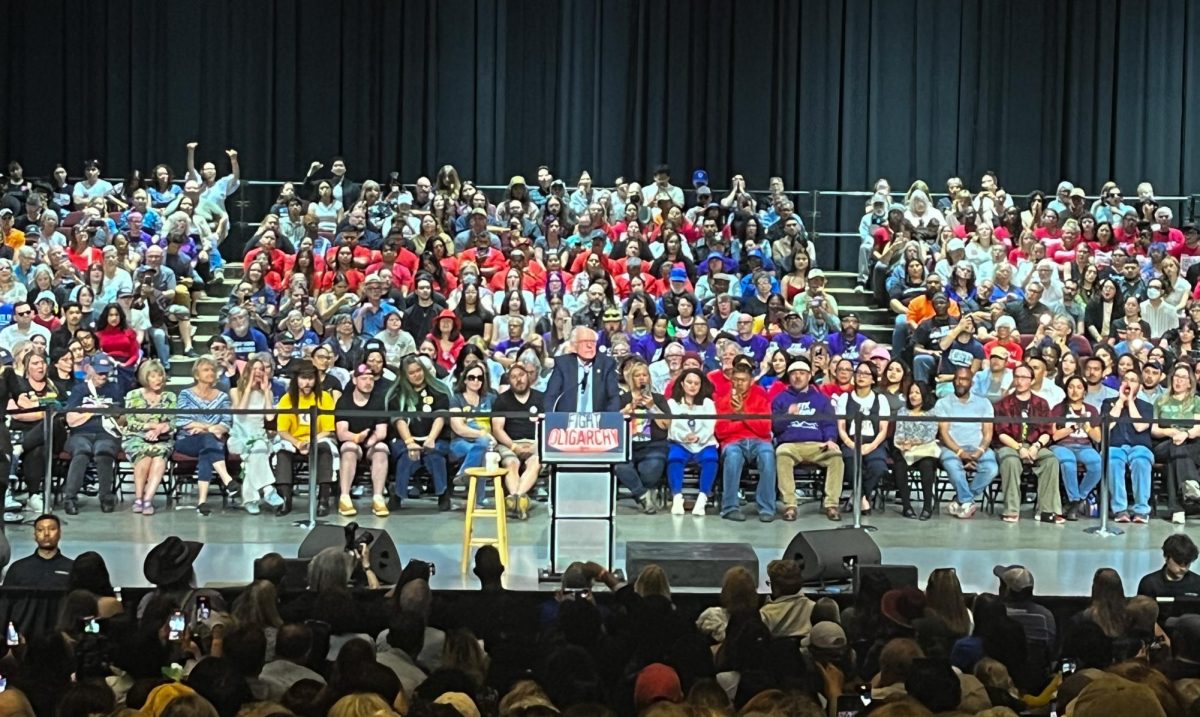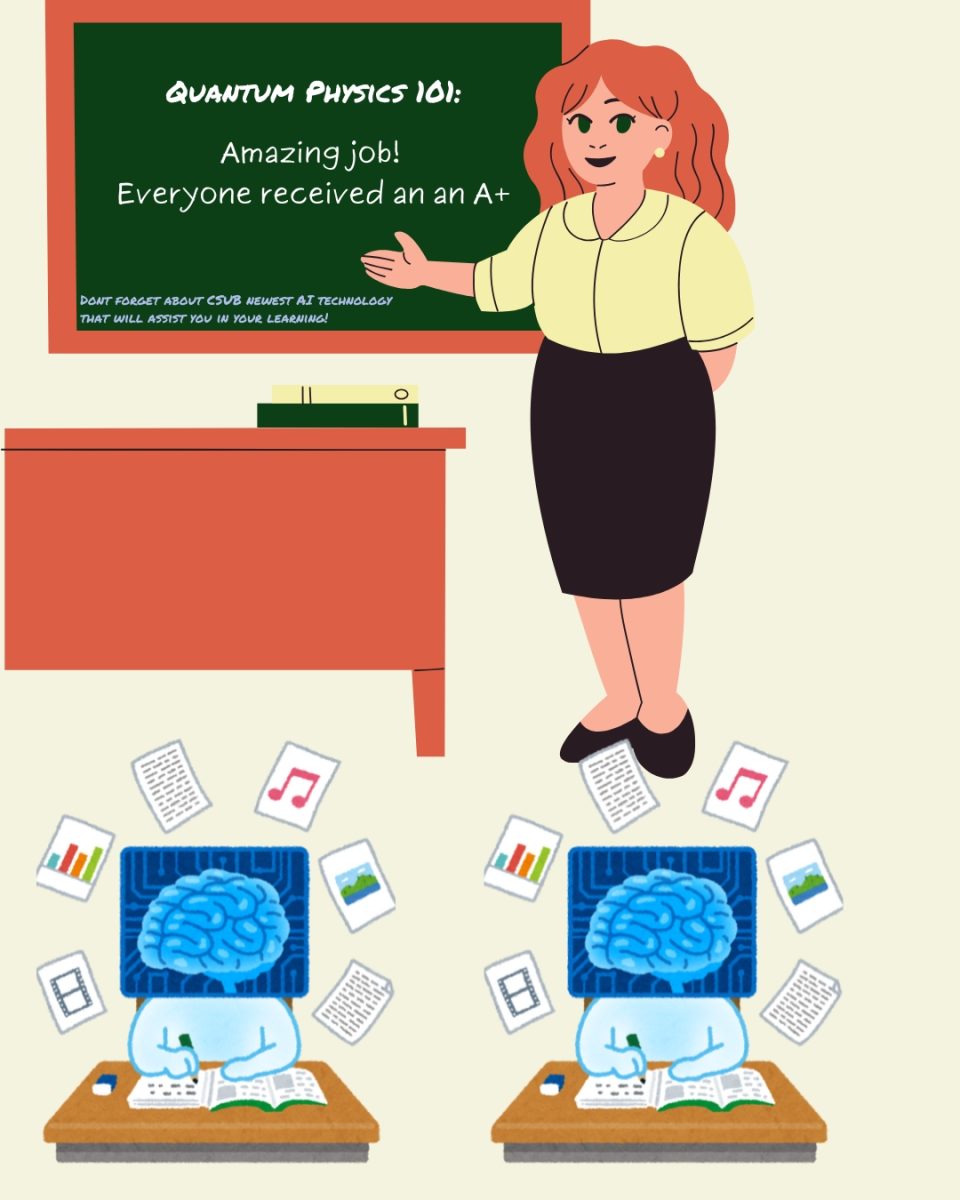By Stephanie Viloria
Staff Writer

A picture of Mahatma Gandhi is displayed in front of the Multi-Purpose Room at CSUB for the Seventeenth Annual Bakersfield Interfaith Conference on Sept. 27.
California State University, Bakersfield hosted the 17th Annual Bakersfield Interfaith Conference on Saturday, Sept. 27 to discuss the controversial topic of compatibility between science and religion. It was held in the Student Union Building in the Multi-Purpose Room, where the panel of speakers and guests gathered to honor Mahatma Gandhi’s birthday and to ponder this thought-provoking question.
The panel of speakers included Dr. Somik Raha, Dr. Robert Allison, Imam Yama Niazi, Bhavaprana, and Dr. Nick Strobel.
The conference began with Raha providing an introduction that honored Mahatma Gandhi and dedicated the event to the great humanitarian figure as a birthday tribute. The rest of the speakers represented a select few religions. Allison represented Judaism, Niazi represented Islam, Bhavaprana represented Hinduism, and Strobel represented Christianity.
Raha briefly explored the life of Gandhi. According to Raha, Gandhi also pondered the connection between religion and science. It was not until he was in his early 40s that Gandhi realized his devotion to God. He was constantly challenged by people claiming that science can provide truth while religion cannot. Despite this he persevered and showed his faithfulness by never doubting the existence of a greater-being that he thought provided the greatest truth. Raha concluded his presentation by playing his friend’s rendition of a hymn that Gandhi found inspiration in all those years ago.
The discussion began as each speaker stated their answers through the point-of-view of their religious stance. Allison spoke through various rabbis’ testimonies and concluded that Judaism welcomes science and is able to co-exist along with it.
Niazi spoke of multiple instances in which Islam’s Qu’ran explained phenomena more than a thousand years ago as if the writer of the religious text knew the science behind them all. “The world is a place where God is known through science.” Niazi said.
Bhavaprana explained that science has answers for the physical world while religion has answers for the spiritual. However, Strobel claimed that science and religion compliment each other.
“Science and religion deal with different aspects of our human experience in the universe,” Strobel said. “[They] are different ways of trying to understand […] how and why things are the way they are and how to make things better.”
The conference concluded with a question and answer session in which guests could ask the panel their own questions concerning the topic.
Elaine Bamer, 25, a first-year CSUB graduate student, was very intrigued by the conference. “I just wanted to get different insights on different religions,” said Bamer.
Bamer was especially fascinated by how similar each speaker’s inputs were despite their different religions. “Everybody’s interpretation is different. However, I feel like everyone’s interpretation shares some commonality.”
The 17th Annual Interfaith Conference peacefully came to a close in which all the speakers agreed that science and religion can exist in harmony. Although they may conflict with each other at times, it is important to remember that one cannot exist without the other. As a religious man, Gandhi still believed in a science of his own. As Gandhi once said, “Forces of nature act in a mysterious manner. We can but solve the mystery by deducing the unknown result from the known results of similar events.”


